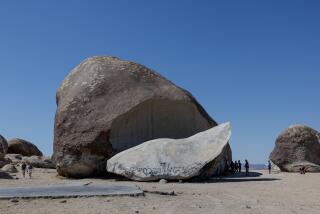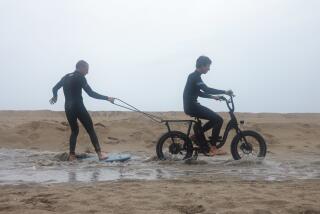You Take Your Chances . . .
Local folks often shrug off their major landmarks, but there are big exceptions. One is âThe Mountain,â as Washington state residents refer to Mt. Rainier.
Itâs a regional reverence that was made official in 1899, when the stroke of a presidentâs pen created Mt. Rainier National Park. It encompasses 235,000 acres of vast snowfields and icefalls, steep river gorges and dense forests. Every year about 10,000 climbers are drawn like worshipers to the 14,410-foot summit; half of them reach it.
Itâs only at the summit that the main reason to be awed and frightened by Rainier becomes clear. There, the mountain vents just enough sulfurous gas to let you know itâs a volcano that looms over the Seattle and Tacoma suburbs that crowd ever closer to its flanks. Unlike with remote Mt. St. Helens, about 2.5 million people live in the region around Rainier and about 100,000 live on top of Rainierâs old mudflows. Why are they so confident in the face of obvious danger?
Rainier is much less likely to blow its top than St. Helens was in 1980, but it still stands as the most dangerous volcano in the United States because of the torrent of debris it could unleash on close-in communities. Rainier and St. Helens are the only two U.S. volcanoes that are constantly monitored for mudslides and lahars--mixes of water, rock and debris that move like wet concrete down a cement truck chute, as Discover Magazine put it.
Rainier carries about one cubic mile of ice and snow, or about 25 times more than St. Helens before it erupted. Rainier doesnât have to blow to cause a problem; it just has to get hot. Mt. Rainier is also dissolving from the inside through a constant, corrosive mixture of water and volcanic gases. Twelve cities and towns, including Tacoma, are in the likely path of its next big mudflows.
Still, the answer to the question of why people want to live near Ranier is only too obvious. Itâs why someone in the heart of Tornado Alley can scoff at those nutty Angelenos and their earthquake faults. Itâs why people build homes on stilts on the southeast coast of the U.S., right in the common path of hurricanes. Itâs why small towns settled in the flood plains of the Mississippi. Itâs convenient or cheap or fertile or fantastically beautiful. Maybe the disaster wonât come or, if it does, will spare the interlopers.
Thereâs not a lot that government can or should do to stop people from risky choices about where they live. But those who insist on settling the flanks of Rainier or the bluffs of Malibu or the edge of the Angeles Forest should be clear-eyed about the trade-off in mud, flood and fire. Because thereâs also a limit to what government can or should do to rescue them or pay for their losses.
--- UNPUBLISHED NOTE ---
This story has been edited to reflect a correction to the original published text. The name of Discover Magazine was misspelled.
--- END NOTE ---
More to Read
Sign up for Essential California
The most important California stories and recommendations in your inbox every morning.
You may occasionally receive promotional content from the Los Angeles Times.










